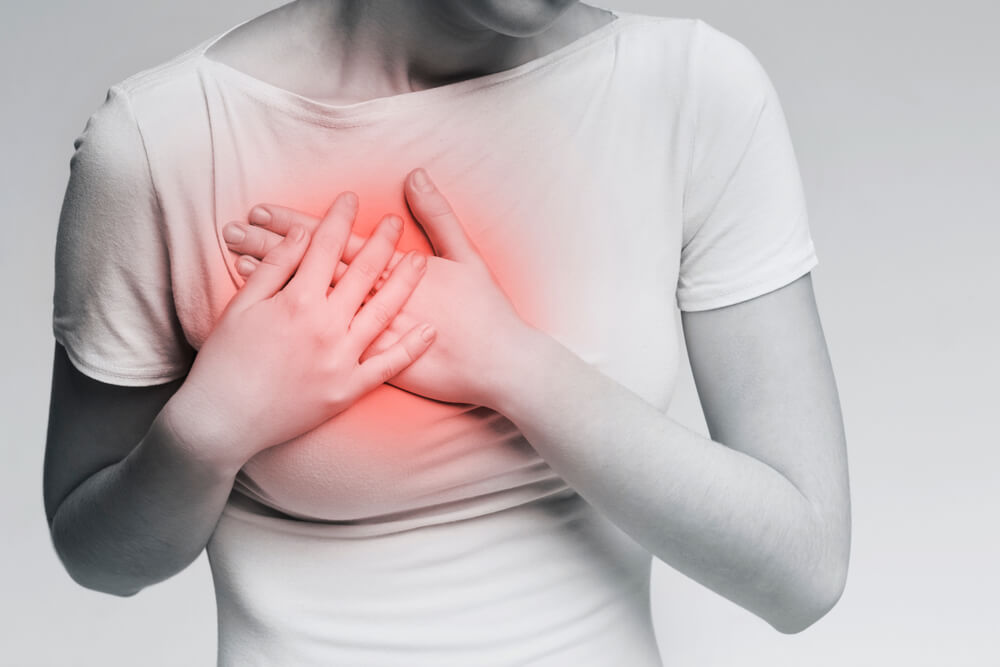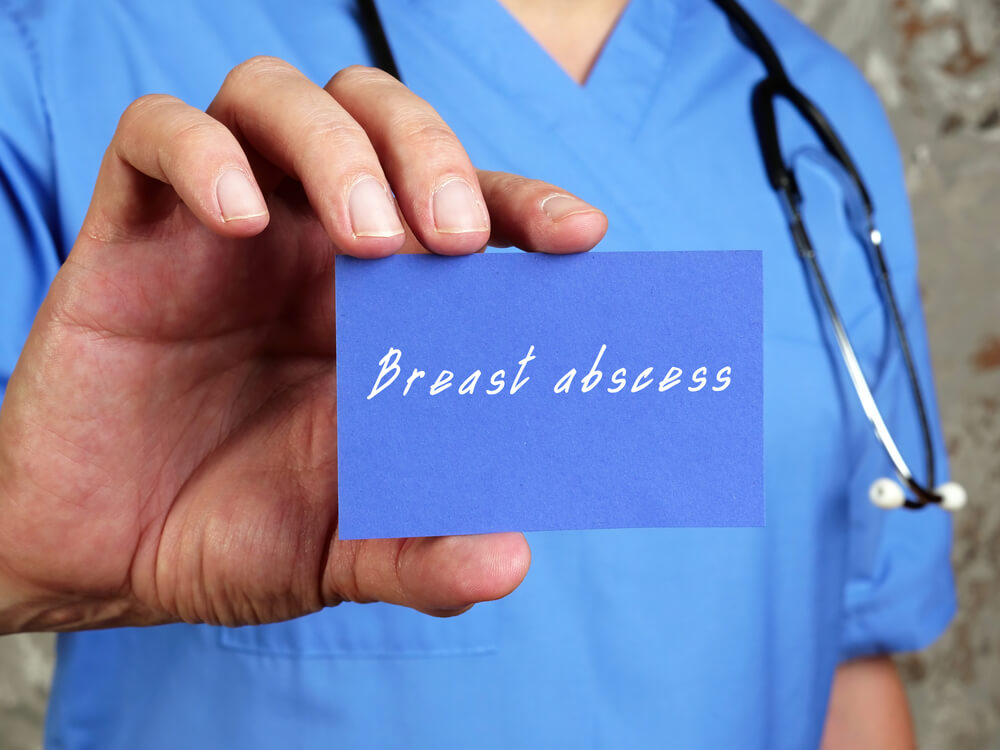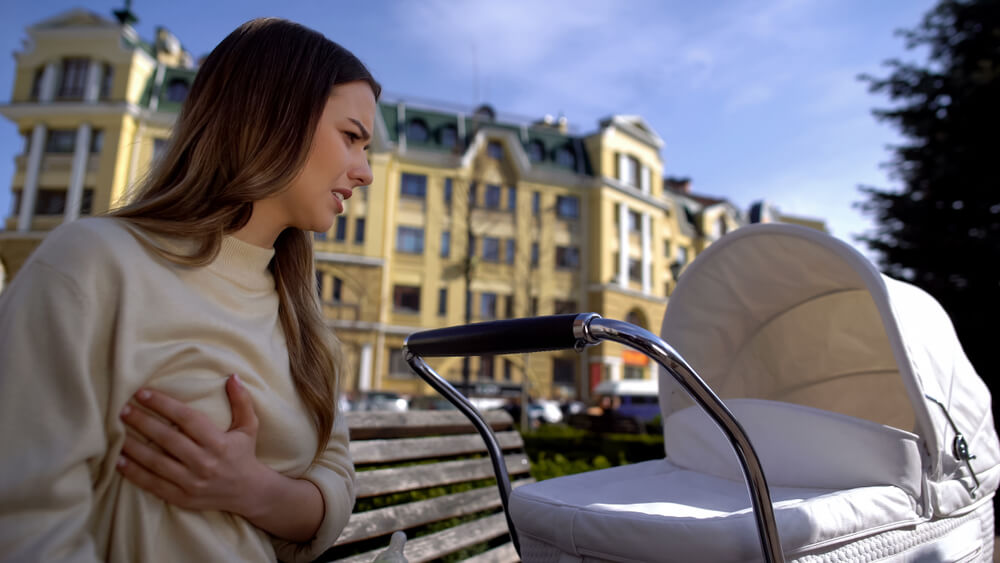What Are Breast Infections?
The term Breast Infection refers to any infection that takes place in the tissues of the breast. This condition is also known as Mastitis. The most common forms of breast infections usually affect women, especially those who are breastfeeding. However, men can also suffer from breast infections.
Types Of Breast Infections
There are many sources of breast infections. These sources include:
- Fungal Infections such as Breast Yeast Infection.
- Bacterial Infections most commonly caused by the Staphylococcus aureus bacteria.
- Abscess-induced Infections caused by blocked ducts and glands in the breast.
- Infections caused by infected or inflamed breast ducts.
- Tobacco-Induced Infections caused by damage to the tissues resulting from exposure to the toxins in tobacco.
To name a few. This article will identify and explain some of the types of infections that occur and the breast infections symptoms used to identify each.

Puerperal Mastitis (Lactational Mastitis)
Puerperal Mastitis is a form of breast infection that often occurs in breastfeeding women. In rarer cases, Puerperal Mastitis may be found in pregnant women as well. This infection is caused by the spread of bacteria from the mouth and nose of the baby. The bacteria travel through cracked nipples and broken skin to gain access to the tissue where it will replicate. Two forms of bacteria that induce Lactational Mastitis are Staphylococcus aureus and Streptococcus spp.
Symptoms of this infection include fevers, breast tenderness and discomfort. The condition can be diagnosed through examination, alongside a breast ultrasound and the testing of expressed milk to determine bacterial counts.
Puerperal Mastitis is usually treated with a course of antibiotics. Regularly emptying the breasts to prevent stagnation of milk that can aid bacterial reproduction is also encouraged.
The condition is not considered serious, and women are encouraged to continue breastfeeding or milk letting, to prevent abscesses.
Puerperal Mastitis is only seen as concerning if it is recurrent or if the patient also suffers from breast abscesses.
Non-Lactational Mastitis
This form of breast infection is quite similar to lactation mastitis, except that it usually only occurs in women who are not breastfeeding. Non-lactation mastitis is not a common condition. Women who are somewhat vulnerable to this form of infection include:
- Women with suppressed immune systems
- Women who suffer from diabetes
- Women exposed to radiation therapy due to lumpectomies
The symptoms of non-lactational mastitis are abnormal swelling in the infections breast, a painful lump in the breast, itching, overly warm to the touch skin and in some cases, there might be a pus-like discharge from the nipples.
Like lactational mastitis, non-lactational mastitis can be diagnosed via examination and ultrasounds.
Treatment for non-lactational mastitis includes antibacterial medication, however, in some cases, steroid treatments or even surgery may be required. The type of treatment depends upon the source and severity of the infection.
Periductal Mastitis
Also known as Mammary duct ectasia, this condition is commonly found in menopausal and post-menopausal women thought to be caused by a bacterial infection in the milk ducts. Smokers are particularly vulnerable to this infection.
Periductal Mastitis is caused by an inflammation of an unconfirmed source in the milk ducts. This inflammation affects the milk ducts causing them to thicken and spread. As the inflammation progresses, it blocks the milk ducts resulting in a build-up of fluid.
Those suffering from Periductal Mastitis may experience symptoms such as inverted nipples, redness and tenderness. In some cases, Periductal Mastitis may cause a thick discharge from the nipple that ranges in colour from green to black.
Diagnosis of Periductal Mastitis requires examination by a physician who will refer the patient to a specialized breast clinic if Periductal Mastitis is suspected. The discharge from the nipple can also be tested to confirm if the patient is suffering from Periductal Mastitis.
Periductal Mastitis can be treated with antibiotics. If symptoms reappear the patient must see a physician.
Subareolar Breast Abscesses
Subareolar breast abscesses is a form of breast infection that usually occurs in non-lactating women. The abscesses that characterize this condition are found in the skin around the nipple, in the area known as the areola.
The pus-filled abscesses are caused by bacteria, which have entered the body through cracks or tears in the skin. Subareolar breast abscesses cause a local infection. Local infection means that even though the bacteria have entered the body, the infection will remain in one area, namely the breast.
Patients suffering from Subareolar breast abscesses will usually experience pain and tenderness around the areola. Lumps might also be detectable beneath the skin. If pressure is applied to the abscess, it might rupture and cause a pus discharge. Patients have also experienced fevers and feelings of general illness when suffering from Subareolar breast abscesses.
In cases where the condition is left untreated Subareolar breast abscesses may form a fistula, which is a hole that leads from the duct to the skin. The infection might also result in nipple inversion if treatment isn’t provided.
Much like with other forms of breast infections, diagnosis of Subareolar breast abscesses is primarily done by examination. Pus discharges can also be tested to indicate whether the condition is present. Physicians might also request blood tests and ultrasounds to confirm the diagnosis.
Treatment of Subareolar breast abscesses is heavily dependent on the size of the abscesses that are present. Usually, antibiotics will be prescribed, but doctors might also decide to cut the abscess to drain the pus.
Recurrent Subareolar breast abscesses might require surgery to remove the glands that are infected.

Breast Yeast Infection
Fungi also affect breast tissues causing fungal infections. Much as seen in bacterial infections, a fungus can often be introduced to the breast tissues by broken skin during lactation. The same method of transference may also occur in non-lactating women.
Fungus such as Candida yeasts live on the surface of the skin, but if the fungus gains access to the body, it may replicate and cause a yeast infection. As the fungi prefer wet, moist conditions clothing that traps sweat or irritates the skin will encourage an infection. Diet also plays a part in the appearance of a breast yeast infection, along with underlying conditions such as diabetes and obesity.
Patients suffering from a breast yeast infection may experience itching, patches of tiny red bumps around the nipple, burning, pain, and in some cases, the fungus may cause pus-filled blisters.
The symptoms found in breast yeast infection can be easily confused with several conditions such as ringworm and eczema, so it is essential to have the condition diagnosed by a professional.
After a breast yeast infection has been diagnosed, it can be treated with prescription-strength antifungals. In cases of a particularly persistent breast yeast infection, a doctor might also prescribe oral antifungal medication.
If the symptoms of the yeast infection are not relieved by the prescribed medication, a return trip to a physician is required.
Conclusion
In conclusion, breast infections are common and shouldn’t be viewed as embarrassing.
Numerous factors can lead to a breast infection, and the symptoms will vary depending upon the cause of the infection. To properly treat the condition, patients should seek professional help to resolve the infection in its early stages. Early treatment may prevent any further complications that could arise from the infection.




